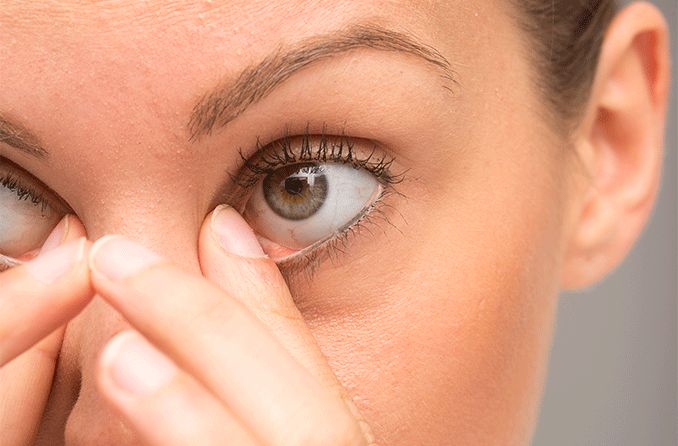What are eye boogers?

Eye boogers: We all get them. They’re nothing to be ashamed of. But what exactly are those crusty, annoying little boogers?
In most cases, eye boogers are a sign that your body is doing its job to keep your eyes lubricated and free of debris, dryness and infection. They’re usually the worst first thing in the morning, but they can show up during other parts of the day too.
Eye boogers can also be called sleep, sleepies, gunk, crust or one of a myriad other vivid descriptions.
What causes eye boogers?
Eye boogers begin their journey as a thin fluid called rheum (pronounced “room”). Rheum consists mostly of a combination of mucus, oils, skin cells and water.
Blinking usually does a good job of rinsing rheum away with your natural tears. But since you don’t blink when you sleep, rheum will clump together and dry during the night, turning into the “eye booger” formations you see in the morning.
These accumulations tend to drift toward the insides of your eyes while you sleep, which is why most eye boogers gather and hang out in the corner(s).
Getting rid of eye boogers
The only way to get rid of eye boogers is to wipe them away.
To avoid any eye irritation or infection, just be sure to wash your hands beforehand, or use a clean washcloth or sterile eyelid wipe.
If you feel like you’re removing more eye boogers than usual, you could be experiencing mucus fishing syndrome.
When you remove, or “fish,” mucus from your eye too often, your body can overcompensate by producing even more mucus — more than you would normally need. This leads to more “fishing,” which leads to more mucus production, and so on.
The cycle can be a tough one to break, and the urge to remove dried mucus can become compulsive. If you think you might be going through this, or experience other increases in eye mucus, speak with an eye doctor.
Should I see an eye doctor?
Eye boogers are normal and almost never a cause for concern. But if they get thicker, appear yellow or green, or you start to notice more of them, you might want to have an eye doctor check them out.
Excessive eye boogers can point to a pretty common condition called blepharitis, when your eyelids become more inflamed than usual.
It’s also possible for eye boogers to be mixed up with mild eye discharge. Discharge, often in the form of clear drainage or thicker pus, is usually a sign that something else is going on around your eyes.
Thick or colored discharge can be a symptom of an eye infection like bacterial conjunctivitis. These infections sometimes go away on their own but other times may need to be treated to avoid a more serious problem.
If you have eye drainage accompanied by any of the following symptoms, schedule an exam with an eye doctor:
Excessive tearing or watery discharge
Thick white, grey or colored discharge
Eye pain, burning or other irritation
SEE RELATED: The difference between white, yellow and green eye discharge
Eye boogers in babies
A baby’s eyes work the same way yours do, so eye boogers are a normal occurrence. If their eyes are white and you don’t see any excessive irritation or “goop,” everything is probably fine.
Eye discharge is also common — but it could be a sign of infection and may require basic treatment. Many eye infections will go away on their own, but a doctor may still want to monitor them during the healing process.
SEE RELATED: Eye discharge in babies and toddlers
Eye boogers in dogs and cats
We have more in common with our pets than we might think — including living with eye boogers.
If you have a cat or dog, you’ve probably noticed eye boogers latching onto the corners of their eyes from time to time. They get them for the same reason we do: rheum that builds up and dries.
Our four-legged companions tend to sleep a lot, and a lot of sleep means a lot of eye boogers. It doesn’t help that their paws aren’t nearly as good at removing mucus as our hands.
But like in humans, eye boogers in dogs and cats shouldn’t be confused with eye discharge, which can be a sign of infection or another disorder. If you spot discharge in your pet’s eye(s), a trip to the vet is probably in your (and their) best interest.
LEARN MORE: Eye discharge in dogs and eye discharge in cats
Page published on Tuesday, December 29, 2020






